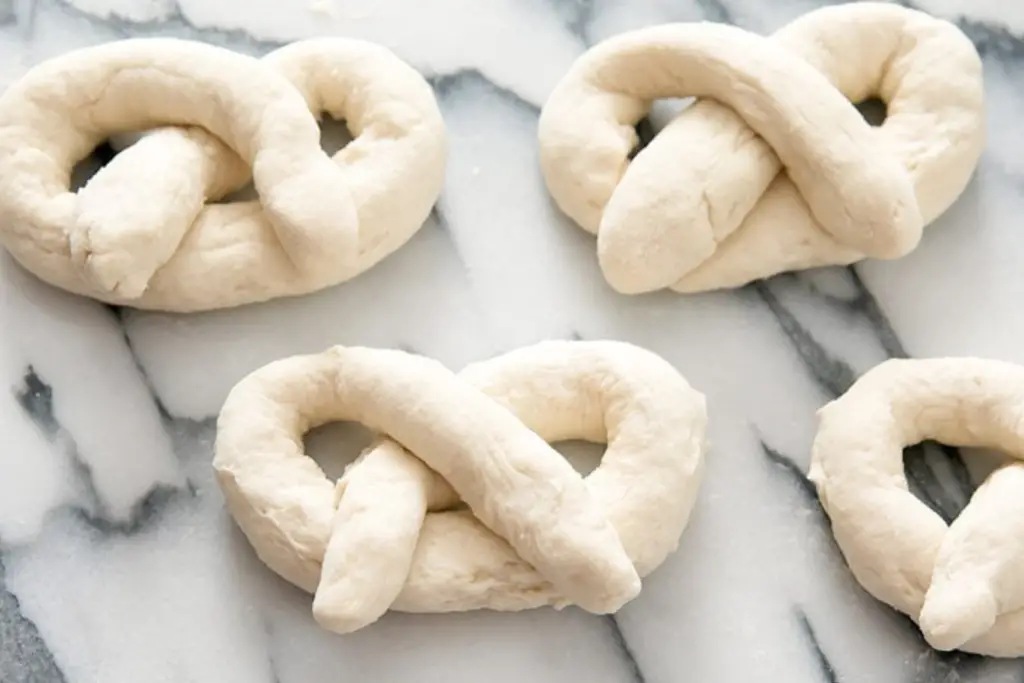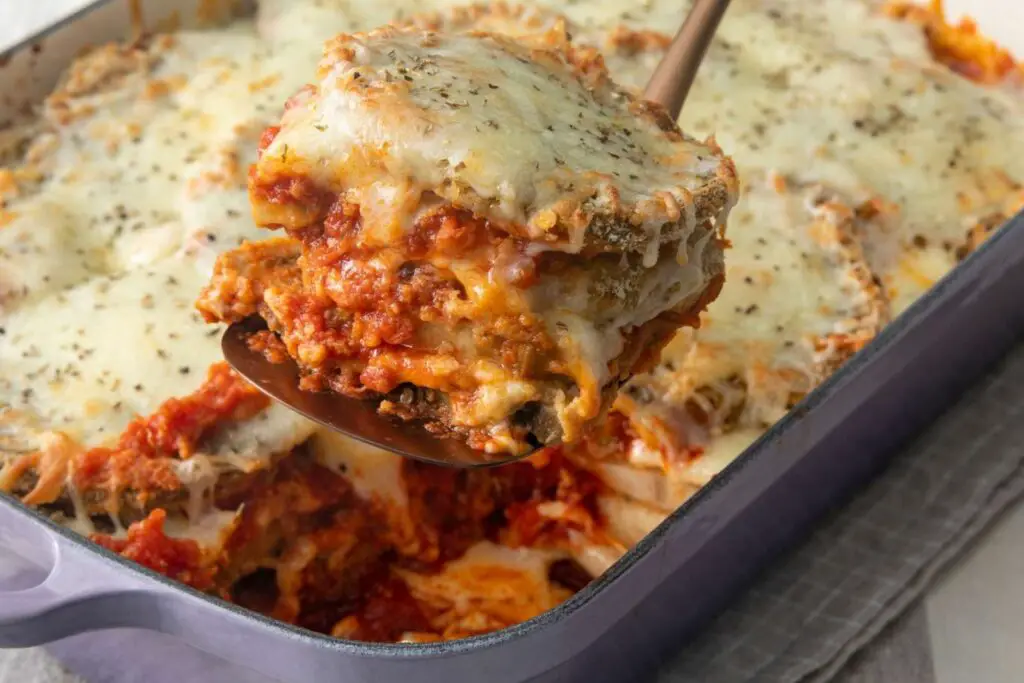
Ziti is a type of pasta that is often used in baked dishes such as casseroles and pasta bakes. It has a tubular shape and is similar to penne pasta. Ziti is a versatile ingredient that can be combined with various sauces, cheeses, and vegetables to create delicious meals. If you have a surplus of ziti or simply want to prepare some in advance for later use, freezing it is a convenient option. Freezing ziti properly will help preserve its texture and flavor, allowing you to enjoy it at a later time. In this article, we will provide a step-by-step guide on how to freeze ziti to ensure its optimal quality for future consumption.
Here’s a guide on how to freeze ziti:
Step 1: Cook the ziti al dente
When freezing ziti, it’s important to cook it al dente, which means that it should be slightly undercooked and firm to the bite. This is because freezing and reheating the pasta can cause it to become softer and lose some of its texture. By cooking the ziti al dente initially, you ensure that it will maintain a desirable texture even after freezing.
If you were to fully cook the ziti until it is completely tender before freezing it, the pasta would become overcooked and mushy when thawed and reheated. This is because freezing and reheating can cause the pasta to absorb more moisture, which can make it overly soft and lose its structure.
Cooking the ziti al dente ensures that it will still have a firm bite and hold its shape even after freezing and reheating. The slightly undercooked texture allows the ziti to hold up better during the freezing process, preventing it from becoming too soft and mushy when thawed.
To achieve the al dente texture, follow the cooking instructions on the package and cook the ziti for the recommended time minus a minute or two. It’s important to test the pasta for doneness by biting into a piece to make sure it’s cooked but still slightly firm in the center.
Step 2: Drain and cool the ziti
After cooking the ziti to al dente, it is important to drain and cool it properly before proceeding with the freezing process. This step helps in maintaining the quality and texture of the pasta during freezing.
Draining the ziti removes the cooking water, which may contain excess starch released from the pasta during the cooking process. This starch can make the pasta sticky and clump together, resulting in a less desirable texture when frozen. By draining the ziti, you eliminate the excess starch and prevent the pasta from sticking together.
Rinsing the cooked ziti with cold water serves two purposes. First, it helps cool down the pasta rapidly, stopping the cooking process. This is important because if the ziti continues to cook, it may become too soft and lose its al dente texture. Rapidly cooling the pasta with cold water halts the cooking and helps preserve its firmness.
Second, rinsing with cold water also removes any residual heat from the pasta, preventing it from steaming and becoming overly moist. Excess moisture can contribute to clumping and undesirable texture when frozen. By rinsing the ziti with cold water, you reduce the temperature and remove any residual heat, minimizing moisture retention.
Overall, draining and cooling the ziti after cooking is essential for preparing it for freezing. It eliminates excess starch, prevents clumping, and helps maintain the al dente texture of the pasta. Taking these steps ensures that the frozen ziti will have a pleasant texture and taste when thawed and reheated.
Step 3: Toss the ziti with oil
To ensure that the ziti does not stick together during the freezing process, it’s recommended to toss it gently with a small amount of oil, such as olive oil or vegetable oil. This step creates a light coating on the pasta, which helps keep the individual pieces separated.
Pasta, especially when cooked, tends to have a slightly sticky surface. When it comes into contact with cold temperatures during freezing, this stickiness can cause the ziti to clump together, making it difficult to separate the pieces when you want to use them later. By tossing the ziti with oil, you create a barrier between the individual strands of pasta, preventing them from sticking together.
The choice of oil is flexible, but olive oil or vegetable oil are commonly used due to their neutral flavors. The oil forms a thin layer on the surface of the pasta, reducing the chances of the ziti sticking together as it freezes. It also helps to prevent any residual moisture on the pasta from causing excessive clumping.
When tossing the ziti with oil, be sure to do it gently to avoid breaking or damaging the pasta. A light coating is all that’s needed to provide sufficient separation. You don’t want to use too much oil, as it may make the pasta greasy or affect the texture when thawed and reheated.
Step 4: Portion the ziti
When freezing ziti, it’s important to consider portioning it before placing it in the freezer. By dividing the ziti into individual or family-sized portions, you can easily thaw and use the amount you need without having to defrost the entire batch. This ensures convenience and minimizes waste.
Portioning the ziti allows for greater flexibility when it comes to meal planning and preparation. Freezing the pasta in smaller portions means you can take out only what you need for a particular meal, whether it’s for an individual serving or a family-sized portion. This eliminates the need to defrost and refreeze the entire batch, which can affect the texture and quality of the pasta.
By freezing ziti in portion sizes, you also have the advantage of faster and more even thawing. Smaller portions thaw more quickly than a large block of frozen pasta. This is especially beneficial when you’re short on time and need to prepare a meal promptly.
Moreover, portioning the ziti helps in reducing food waste. If you were to freeze the entire batch as a single unit, you might end up defrosting more pasta than needed, leading to potential leftovers that may go to waste. Portioning allows you to thaw and use only the necessary amount, reducing the chances of food wastage.
Consider your specific needs and preferences when deciding on portion sizes. If you typically cook for one or two people, individual portions may be ideal. For larger households, family-sized portions may be more suitable. It’s a good idea to package the portions in freezer-safe containers or resealable plastic bags for easy storage and organization.
Step 5: Package the ziti for freezing
After portioning the ziti, it’s essential to package it properly for freezing. This step involves transferring the portioned ziti into suitable freezer-safe containers or resealable plastic bags. Removing excess air from the bags and creating an airtight seal helps maintain the quality and prevent freezer burn.
Freezer-safe containers or resealable plastic bags are the preferred packaging options for freezing ziti. These containers are designed to withstand low temperatures and protect the pasta from moisture loss and freezer odors. Make sure the containers or bags are clean and dry before use.
If using resealable plastic bags, it’s crucial to squeeze out any excess air from the bags before sealing them tightly. Excess air in the bag can lead to freezer burn, which can affect the taste and texture of the ziti over time. Squeezing out the air helps minimize the contact of the pasta with oxygen, preserving its quality during freezing.
Another option is to use a vacuum sealer, which removes the air from the packaging and creates an airtight seal. Vacuum sealing ziti can provide an extra layer of protection against freezer burn and maintain the pasta’s freshness for an extended period. If you have a vacuum sealer available, it can be a convenient tool for packaging the ziti.
Regardless of the packaging method chosen, it’s important to label each package with the contents and the date of freezing. This ensures proper organization and helps you keep track of the ziti in the freezer. Use a permanent marker to write the necessary information on the containers or bags.
Step 6: Label and date the packages
Once the ziti portions are packaged and ready for freezing, it’s important to label each package with clear and specific information. Using a permanent marker, label the packages with the contents (ziti) and the date of freezing. This labeling step is crucial for organization, tracking, and ensuring the ziti is used within an appropriate time frame.
Labeling the packages with the contents (ziti) allows for easy identification in the freezer. When you have multiple items stored, clear labeling helps you quickly locate the desired package without the need for guessing or opening each container. It saves time and reduces the chance of defrosting the wrong item.
Additionally, including the date of freezing on the package is vital for proper inventory management. By dating the packages, you establish a record of when the ziti was frozen. This information serves as a reference point to keep track of how long the pasta has been in the freezer. It ensures that you use the ziti within a reasonable time frame to maintain its quality and taste.
Freezing can affect the taste and texture of food over time, so it’s important to adhere to recommended storage times for optimal quality. While ziti can typically be stored in the freezer for several months, it’s best to consume it within three to six months for the best results. By labeling the packages, you can easily determine when the ziti was frozen and make informed decisions about its usage based on the recommended storage times.
Step 7: Freeze the ziti
After properly packaging the ziti portions, the next step is to place them in the freezer for the freezing process. When freezing the ziti, it’s important to arrange the packages in a flat position, avoid stacking them until they are completely frozen, and ensure even freezing. These steps contribute to maintaining the quality and ease of storage.
Placing the packaged ziti in a flat position allows for even exposure to cold temperatures throughout the pasta. This helps ensure that the ziti freezes uniformly, preventing any areas from thawing and refreezing, which can negatively impact the texture and quality of the pasta. By arranging the packages flat, you promote consistent freezing and maintain the integrity of the ziti.
Avoid stacking the packages until they are completely frozen to prevent them from sticking together. If stacked too soon, the packages may become fused or difficult to separate, making it challenging to remove only the desired amount of ziti for future use. Stacking the packages once they are fully frozen ensures that they maintain their individual integrity and can be easily retrieved from the freezer.
Even freezing and proper storage also help to prevent freezer burn. Freezer burn occurs when food is exposed to air, leading to moisture loss and changes in texture and taste. By arranging the packages in a flat position and avoiding stacking until they are frozen, you minimize the risk of air exposure and subsequent freezer burn.
When placing the ziti packages in the freezer, try to allocate space for them in a way that allows for easy access and organization. Consider keeping similar items together for efficient storage and retrieval. This will help you locate the frozen ziti quickly when needed.
How long can I store frozen ziti?
Frozen ziti can be stored for approximately 2 to 3 months without significant loss in quality. It’s best to consume it within this time frame to ensure optimal taste and texture. Proper packaging, labeling, and storage conditions are essential for maintaining the quality of the frozen ziti.
Step 8: Thaw and use the frozen ziti
When you’re ready to enjoy the frozen ziti, it’s important to thaw it properly to ensure the best texture and taste. Thawing the ziti in the refrigerator overnight is the recommended method as it allows for a slow and controlled thawing process.
Thawing the frozen ziti in the refrigerator helps to maintain the pasta’s texture and minimize moisture loss. The gradual thawing in the fridge ensures that the ziti remains cold and prevents the growth of harmful bacteria that can occur when food is thawed at room temperature.
To thaw the ziti, simply remove the desired portion from the freezer and place it in a container or on a plate. It’s best to keep the ziti in its original packaging or transfer it to a covered container to prevent cross-contamination and maintain its quality.
Allow the ziti to thaw in the refrigerator overnight or for approximately 8 to 12 hours. The exact time may vary depending on the size and thickness of the portion. Thawing overnight ensures that the ziti defrosts evenly and gradually, maintaining its texture and flavor.
Once the ziti is thawed, you can incorporate it into your favorite recipes or reheat it as needed. Whether you’re making a baked pasta dish or simply reheating the ziti for a quick meal, it’s important to follow the cooking instructions provided in your recipe.
Keep in mind that thawed ziti may be more delicate than freshly cooked pasta, so handle it gently to avoid breaking the pieces. Be cautious not to overcook the ziti during reheating, as it can become mushy. Follow the recipe’s instructions for reheating or cooking times to ensure that the ziti is heated through without becoming overly soft.
Other related questions
Can I refreeze ziti?
No, it is not recommended to refreeze ziti once it has been thawed. Refreezing can negatively affect the quality and safety of the pasta. The thawing process causes moisture to be released, and refreezing can lead to texture degradation and potential bacterial growth.
How do I know if the ziti has gone bad after being frozen?
To determine if frozen ziti has gone bad, check for signs of spoilage such as an off smell, mold growth, or unusual texture. If the ziti has an unpleasant odor, visible mold, or a slimy or mushy texture, it is likely spoiled and should not be consumed. Additionally, if the ziti has been stored in the freezer for an extended period beyond the recommended storage time, it is advisable to discard it to ensure food safety.
Can I freeze uncooked ziti?
Yes, you can freeze uncooked ziti. Follow the same steps of portioning, packaging, and labeling mentioned earlier. However, keep in mind that frozen uncooked ziti may require a longer cooking time when you decide to prepare it in the future.
Can I freeze leftover ziti from a restaurant?
Yes, you can freeze leftover ziti from a restaurant. Transfer the leftovers to an airtight container or resealable bag, ensuring they are properly sealed. Label the container with the date and contents, and store it in the freezer. Thaw and reheat the leftover ziti following the same steps mentioned earlier.
Can I freeze ziti with dairy-based sauces or cheeses?
Yes, you can freeze ziti with dairy-based sauces or cheeses. However, keep in mind that the texture of dairy products may change slightly after freezing and reheating. Some cheeses, such as mozzarella, can become slightly grainy. It’s recommended to slightly undercook the pasta and the sauce to minimize texture changes upon reheating.
Can I freeze ziti with alternative pasta options, such as gluten-free or whole wheat?
Yes, you can freeze ziti made with alternative pasta options, such as gluten-free or whole wheat. Follow the same steps for portioning, packaging, and freezing as you would with traditional ziti. Keep in mind that alternative pasta options may have slightly different textures after freezing and reheating, so adjust cooking times accordingly.








